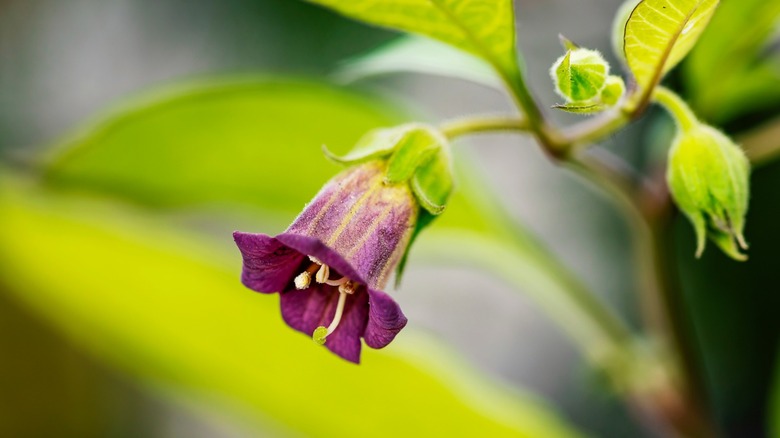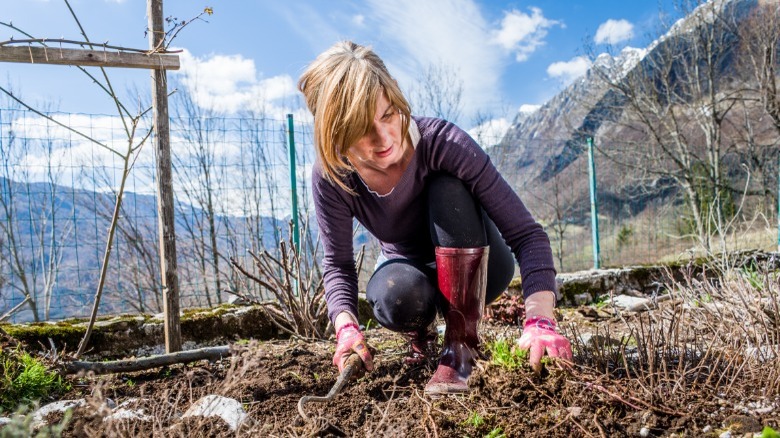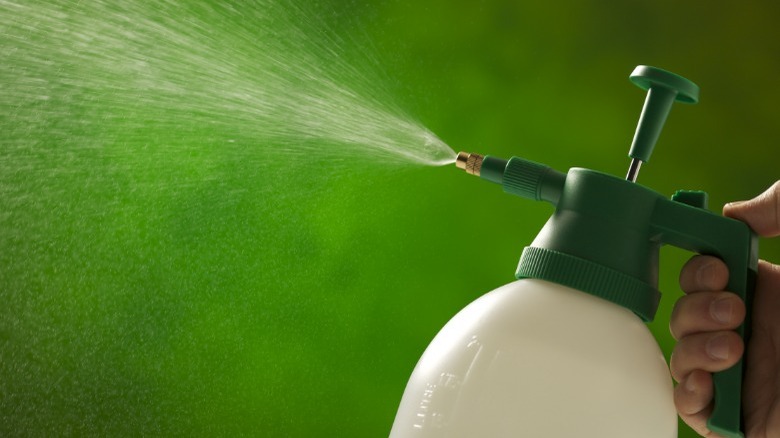What Is Belladonna And How To Keep It Out Of Your Garden
Depending where you are in the world, you may have come across the belladonna plant at some point in time (otherwise known as Deadly Nightshade). It's native to England and both Central and Southern Europe. With a name like belladonna, you would think this plant would be celebrated and featured in a garden; however, that couldn't be further from reality. Instead, you'll find it in less glamorous parts of the country, such as roadsides and landfills. At some point, it made its way to the U.S. and is found in New York, Washington, Oregon, and California.
Between its purple petals and bell-shaped flowers, the belladonna is one beautiful plant. But don't be fooled by its beauty; this is one dangerous flora. Its berries might look delicious, but they're highly toxic and can do major harm if ingested (this is true for cats, dogs, and horses too). If eaten, it's very likely you'll develop belladonna poisoning, which causes rapid heartbeat, dilated pupils, delirium, vomiting, hallucinations, and respiratory failure that may lead to death.
Because of its high toxicity level, it's incredibly important to keep belladonna out of your garden or remove it if it's already there. Thankfully, we know exactly how to do both.
How to remove belladonna
What you need to understand about belladonna is that it spreads like wildfire and can grow up to 4 feet in height in the period of just one season. If you have this plant in your garden, the quicker you get rid of it, the better, especially if you let your pets outside. But before you get started, you need to take the proper precautions to ensure your safety. When you remove the belladonna, make sure to wear protective gear, including long sleeves and pants, boots, and gloves. Just one touch of the plant can aggravate your skin.
To get rid of the plant, you must dig out the entire plant, including the roots. Without roots, it doesn't have a chance of growing back. Carefully dispose of the plant in your trash can. For extra precaution, you might want to double-bag it before throwing it away. This way, it will make it more difficult for raccoons and other animals to reach it.
Other methods for removal
There are other ways to remove belladonna from your garden, such as herbicides. Unfortunately, there is one major problem with this method. When you spray this type of chemical on the nightshade, there's a high chance it will get on the other plants around it, so you need to make sure you focus on the belladonna and protect the others. If you do go ahead and use herbicides, you have to do it under the proper circumstances. It should be at least 60 degrees with no chance of rain for at least a day.
After you spray the herbicide, the plant will eventually turn yellow and die. After it's dead, you'll have to cut the plant down to the vine and extract it. More extreme measures involve covering the area with trash bags and holding them down with bricks to prevent the plant from ever sprouting again. Now, this method could take up to two years, but it's effective.


